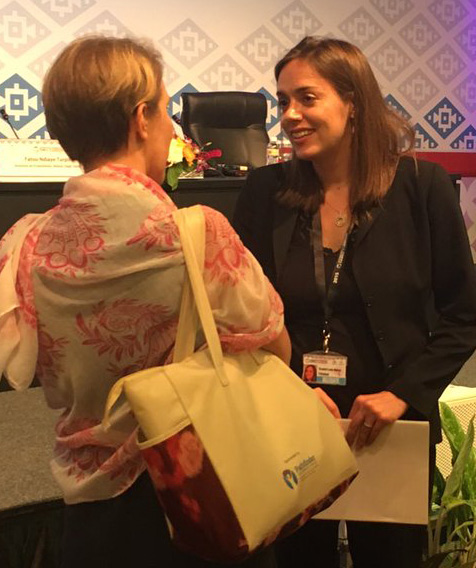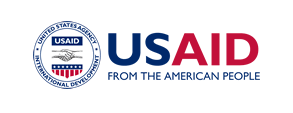The Health Policy Project ended in 2016. Work continued under Health Policy Plus (HP+) until 2022.
NEWS & VIEWS
By Elizabeth Leahy Madsen, Senior Technical Advisor, HP+/Palladium
This blog was first posted on the official 2016 International Conference on Family Planning hub: http://crowd360.org/family-planning-in-the-sustainable-development-goals-seeking-the-goldilocks-approach/.
While attending the fourth International Conference on Family Planning (ICFP) this week, my colleagues and I joke that we should play “ICFP Bingo.” Several terms are referenced so frequently that you can predict you’ll hear them in nearly every session and plenary. Sitting at the top of the list are the new Sustainable Development Goals (SDGs).
Joking aside, we are hearing so much about the SDGs because they are becoming one of our touchstones, guiding our community’s strategies to expand access to and use of family planning by women and girls around the world. The SDGs were adopted last year to build upon the global development agenda laid out in the Millennium Development Goals (MDGs). Reflecting an expanded, more holistic, and more inclusive view of development than the MDGs, FP advocates have worked hard to incorporate the sexual and reproductive health and rights agenda in two of the 17 goals—those for health and gender equality.

Elizabeth Leahy Madsen (R) taking questions at ICFP 2016 about ImpactNow
It is likely that one indicator under SDG 3, which addresses health, will be the percentage of all demand for family planning that is met with modern contraception. Demand for family planning is the sum of women who are currently using contraception and those with unmet need. For this indicator, the FP movement has proposed that countries should aim for a benchmark of 75 percent—that is, that three-quarters of all women who wish to avoid pregnancy are using a modern FP method.
The 75 percent benchmark is slightly lower than the current average for developed countries, and the SDGs’ end date of 2030 is nearly 15 years away. But is it reasonable to expect that most developing countries will be able to achieve this level over that time period? According to an ICFP presentation by Vladimira Kantorova of the United Nations Population Division, the 75 percent threshold is likely too ambitious for many countries where FP needs are highest. Her research used probabilistic models based on country, regional, and global historic experiences to project that most countries in Africa have less than a 10 percent chance of reaching the benchmark. Furthermore, 20 countries in Africa have less than a 1 percent chance of meeting the goal.
In recent years leading up to adoption of the SDGs, a flurry of FP commitments has also been made by individual countries, largely inspired by the 2012 London Summit and resulting FP2020 partnership. While welcome, some of these new commitments also raise questions about feasibility. For example, Nigeria aimed to more than double contraceptive prevalence in six years; Ethiopia committed to increasing family planning use by an incredible 40 percentage points in three years.
Those of us in the FP community are not accustomed to the problem of over-commitment by policymakers. In just a few years, we have shifted from an era when family planning was often marginalized due to political sensitivities or paid mere lip service, toward an invigorating, inspiring atmosphere of commitment that is fully evident here at ICFP. Supplementing the dozens of new country and donor commitments, new budget lines are being allocated at the national and subnational levels, and Costed Implementation Plans are being developed to establish detailed frameworks for the evolution of FP programs.
This transformation has been incredible and is due to the inspired work of thousands of passionate, dedicated people. But as I soak up the achievements and lessons learned on offer this week in Bali, I’ve sometimes thought of the fairy tale of Goldilocks, who declined several meals offered by a family of hospitable bears until she found one that was not too cold, not too hot, but just right.
Now that we have emerged from a desert of too little attention and ambition for family planning, I hope we can also be careful to avoid overcommitting to goals that will prove nearly impossible to achieve. Attempting to meet unrealistic targets could undermine respect for human rights and full empowerment, which our community agrees must be central principles of FP programs. Similarly, if our goals are not met, we could eventually lose the attention and enthusiasm of powerful decisionmakers, which we have worked so long to capture.
I’m not suggesting that we weaken our goals or fail to hold governments accountable for their promises. Frankly, I think the problem of overly ambitious commitments is preferable to the reverse. But as our community forges on from ICFP in the dawn of the SDGs era, I encourage us to develop and implement goals that are aspirational, but also achievable—as close as possible to “just right.”
What's New
- Something to Build On: “Innovation Exchange” Celebrates the Health Policy Project’s Close and a New Beginning
- What Will it Take for Tanzania to Achieve ART Targets and Ensure Long-Term Sustainability of the HIV Response?
- Helping Kenya’s County Leaders Advocate for Increased Health Investments
- HPP Holds Working Meeting on Ensuring Responsible PEPFAR Transitions for Key Populations
- Health Policy Project Celebrates 2016 International Women's Day
- HPP Staff Participate in White House Conference on HIV Stigma Reduction

